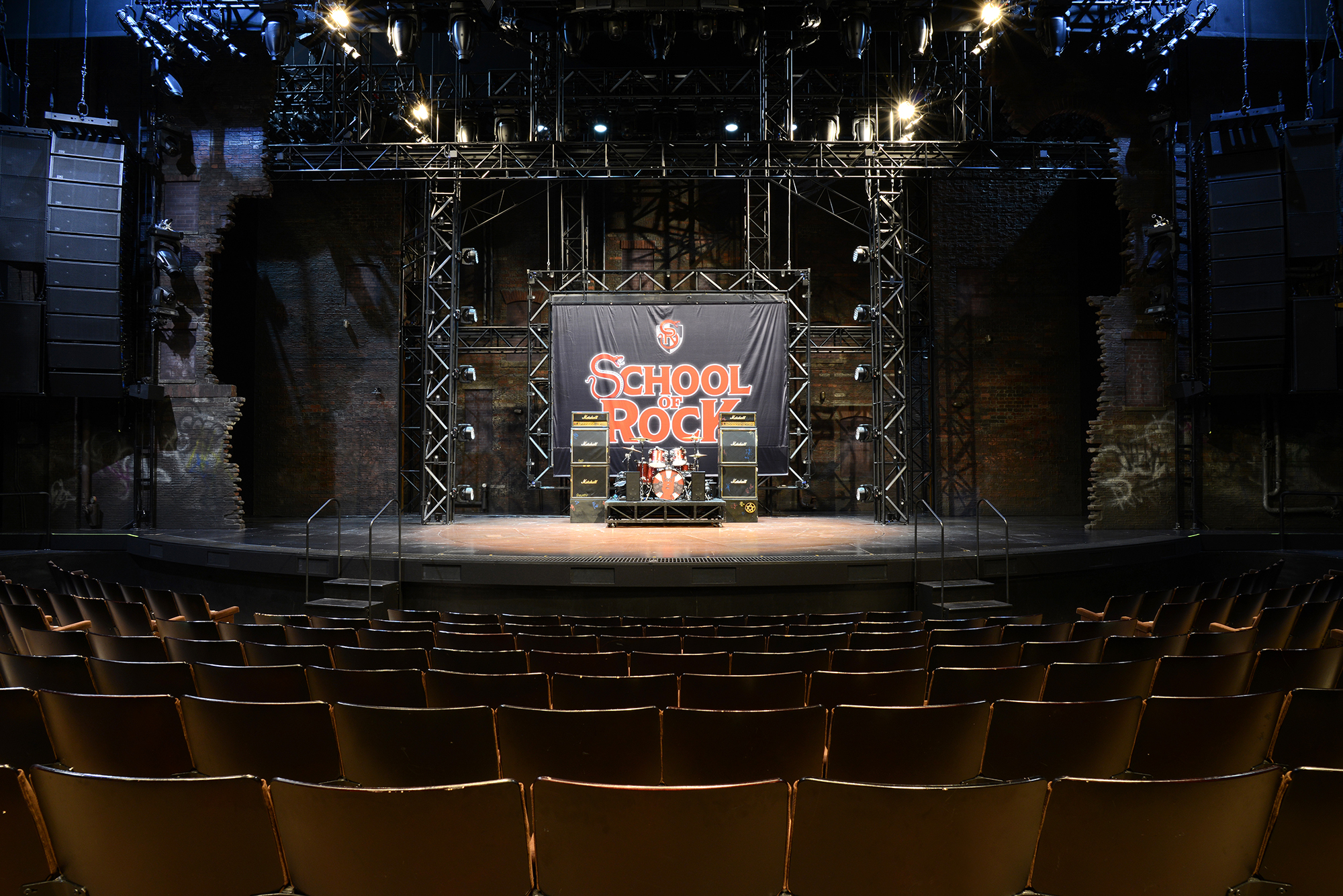
 PIN
New London Theatre
PIN
New London Theatre
Playing to the public since Elizabethan times
Whilst the New London is a modern building there has been entertainment on the site since Elizabethan times. The theatre is close to both Covent Garden and Holborn tubes.The first production in the current building was a television recording of Marlene Dietrich’s one-woman show and the first full production was The Unknown Soldier and his Wife in 1973, written by and starring Peter Ustinov. Subsequent productions include Grease with Richard Gere, Bruce Forsyth’s one-man show and Sheila Hancock in Deja Revue.
1981 saw the debut of Andrew Lloyd Webber’s musical Cats starring Elaine Paige, Brian Blessed, Wayne Sleep, Paul Nicholas, Sarah Brightman and Bonnie Langford. Direction was by Trevor Nunn with choreography by Gillian Lynne. The show ran for 21 years. Umoja, Joseph and the Amazing Technicolor Dreamcoat, Blue Man Group and Gone with the Wind have subsequently played at the theatre which was previously home to the National Theatre’s record breaking production of War Horse.
History
Although the New London is a modern building, there has been a place of entertainment on the site since Elizabethan times. Nell Gwynne, mistress of Charles II, was associated with the tavern here which by the end of the 17th century was called the Great Mogul. In the early 18th century it was a meeting place for Glee Clubs and ‘sing-songs’ were held in the adjoining hall.
The Mogul Saloon was built in 1847 and, over the next four years, was renamed the Turkish Saloon and the Mogul Music Hall before finally settling on the name The Middlesex Music Hall in 1851. Operating under this name reconstruction work took place to house larger audiences in both 1872 and 1892.
In 1911 a completely new building was erected under the auspices of Oswald Stoll and renamed the New Middlesex Theatre of Varieties. This building was acquired by George Grossmith and Edward Laurillard in 1919, the interior was completely redecorated and the building given another new name – The Winter Garden.
The first production under the new name was the Jerome Kern musical Sally (1921) followed by The Cabaret Girl (1922), again by Kern and a Kern hat trick with The Beauty Prize (1923). Other major musical productions of note were The Vagabond King (1927), Fred and Adele Astaire in Funny Face (1929), Sophie Tucker in Follow a Star (1930) by Vivian Ellis, Gracie Fields in Walk This Way (1932) and The Water Gypsiesby Vivian Ellis and A P Herbert (1956).
The Winter Garden also achieved considerable success with a number of plays including Lewis Casson in George Bernard Shaw’s On the Rocks (1933), Love on the Dole (1935) starring Wendy Hiller, a Donald Wolfit season (1945), Agatha Christie’s Witness for the Prosecution (1953), Hotel Paradiso (1956) starring Alec Guinness, Douglas Byng, Irene Worthand featuring Billie Whitelaw as a maid, Tyrone Power in Shaw’s The Devil’s Disciple (1956) and Eugene O’Neill’s The Iceman Cometh (1958).
In 1959 the theatre closed when the Rank Organisation sold it to a property developer. The Winter Garden was stripped and stood idle for many years whilst different plans for the site came and went. Eventually it was demolished and the replacement building as it stands today consists of an underground car park, a cabaret venue, the New London Theatre, a basement nightclub/bar, several shops and a residential tower.
The New London’s auditorium first opened in 1972, under the supervision of Bernard Delfont, with a television recording of Marlene Dietrich’s one-woman show. The official theatrical opening was in January 1973 with The Unknown Soldier and His Wife, written by and starring Peter Ustinov and featuring his daughter Tamara Ustinov and Brian Bedford; Grease followed with Richard Gere as Danny Zuko and a young Elaine Paige in the cast. Sheila Hancock and George Cole starred in the revue Deja Revue (1974) directed by Victor Spinetti, followed by a successful run Of Bruce Forsyth with his one-man show (1975), and various short seasons including Kwazulu, Africa’s Musical Explosion (1975)and John Hanson in Ivor Novello’s Glamorous Night(1975).
Leave Him to Heaven (1976) was a rock and roll musical with Brian Protheroe heading a cast that also featured Steven Pacey and Anita Dobson. Bernard Miles starred in his Mermaid Theatre production of Treasure Island (1976) prior to the opening of Lionel (1977), a musical created from the works of Lionel Bart with a cast that included Avis Bunnage, Marion Montgomery, Clarke Peters and a very young Todd Carty. Steven Berkoff directed and appeared in his own adaptation of Kafka’s Metamorphosis (1977) and returned with productions of East and The Fall of the House of Usher (both 1978).
Between 1977 and 80 the auditorium of The New London was used very successfully as a television studio, including early broadcasts of championship snooker and broadcasts of This is Your Life. The whole building was also occasionally put to use as a conference centre as had been intended in the building’s revolutionary design.
The building returned to full time operation as a theatre with the opening of Andrew Lloyd Webber’s musical Cats starring Elaine Paige, Brian Blessed, Wayne Sleep, Paul NicholasSarah Brightman and Bonnie Langford. Direction was by Trevor Nunn with choreography by Gillian Lynne and the show was co-produced with Cameron Mackintosh using all of the technology that the innovative building provided including the revolving auditorium.
In 1991 the building was purchased by Andrew Lloyd Webber’s Really Useful Group and, in turn, the year 2000 saw it become part of Really Useful Theatres when Andrew Lloyd Webber and Bridgepoint Capital purchased Stoll Moss Theatres. January 2002 heard the announcement that Cats, the longest-running musical in West End and Broadway history, was to close. The show ended the first of its nine lives, on its 21st birthday, 11 May 2002. The final performance was also broadcast on a large screen in the Covent Garden Piazza. Prior to the opening of Umoja – The Spirit of Togetherness (2002, transferred from Queen’s), the building underwent an extensive programme of work to reinstate the original stage machinery and auditorium features which made it so versatile that on its opening in 1976 it was hailed as ‘Europe’s revolutionary new entertainment venue’. Given the opportunity of designing a ‘theatre for the future’, the architects (Paul Tvrtkovic in association with Sean Kenny, famous for his original Oliver! set, Chew and Percival) incorporated many revolutionary features, notably the stunning 60’-wide revolve which includes the stage, orchestra pit and part of the seating which was used to such great effect in Cats.
The Twenty-first century productions have been Bill Kenwright’s new production of Joseph and the Amazing Technicolor Dreamcoat (2003) starring Stephen Gately, The Blue Man Group (2005) who brought a whole new theatrical experience to London, Ian McKellen led the RSC ensemble casts of King Lear and The Seagull (2007) and short runs for the new musicals Gone With the Wind (2008) and Imagine This (2008). The sell-out production of War Horse (2009) transferred from the National Theatre and has played to full houses ever since.
TripTide Thoughts
Nice new theatre with a great heritage. Amazing service and well planned out theatre. We loved it
How to get there
How to get there:
By Underground:
The nearest underground stations are Holborn (Piccadilly and Central lines) and Covent Garden (Piccadilly line).
By Bus
1, 59, 68, 134, 168, 171, 188, 243, X68
By Car
The nearest car park is the NCP underground car park immediately adjacent to the New London Theatre.
Tags
- Culture
- , Westminster
- , Theatreland
- , West End
- , theatre



 Facebook
Facebook Twitter
Twitter Tumblr
Tumblr Google+
Google+ Pinterest
Pinterest LinkedIn
LinkedIn







